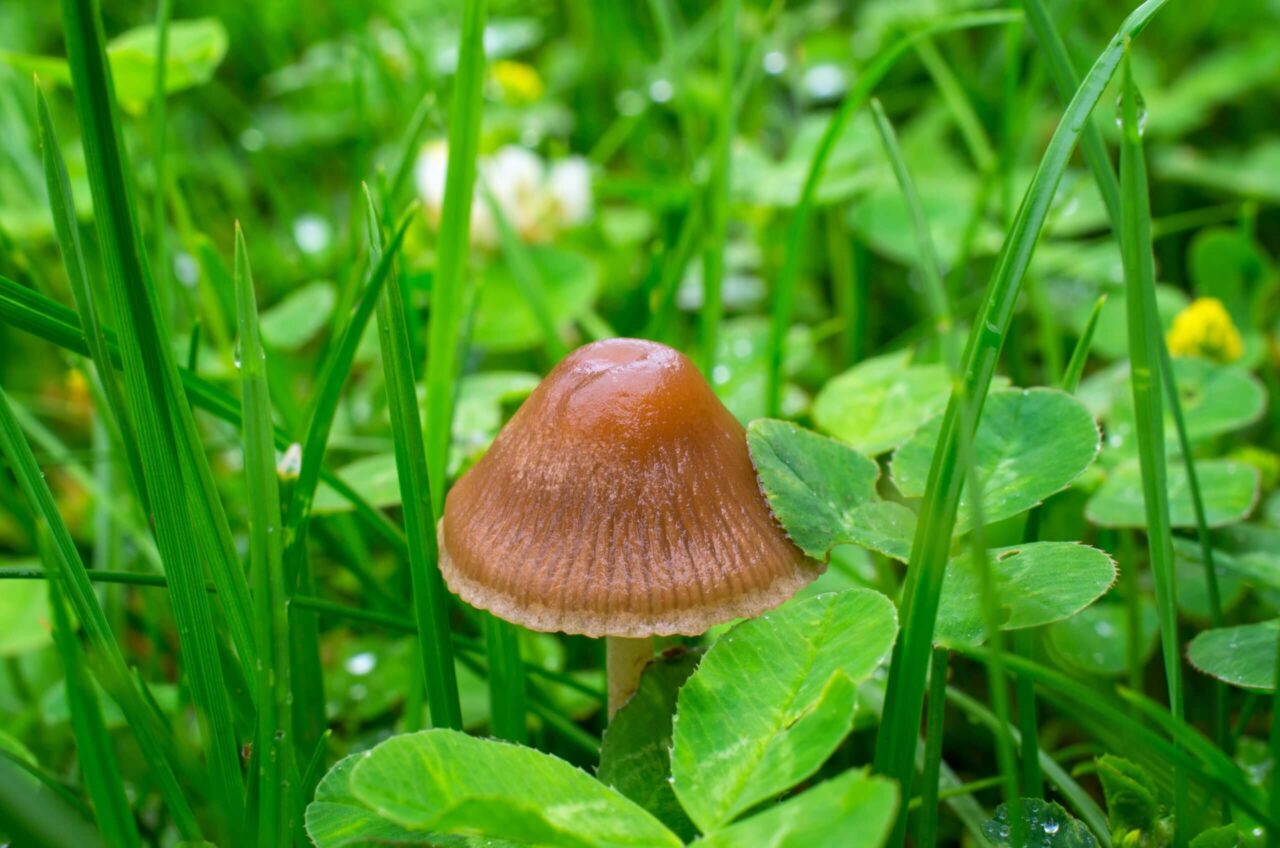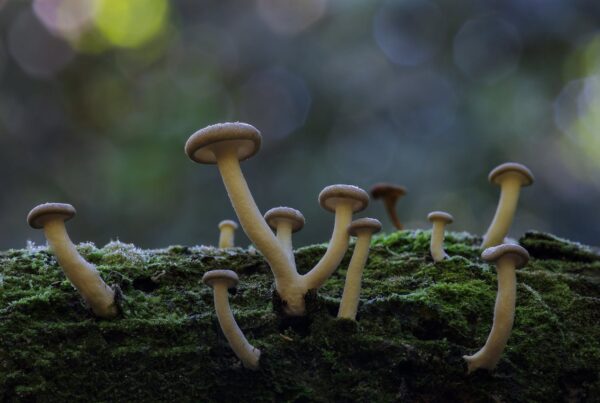Magic Mushrooms
Mushrooms are loved across the globe as a food source. They are often used to give an earthy flavor to food, or even to provide a meaty texture to our favorite meals. Nonetheless, certain types of mushrooms are known to uplift moods and make us feel better, and they are widely known as magic mushrooms. Magic mushroom is the name given to mushrooms containing psychotropic typtamines psilocybin and psilocin, although some species contain weaker psychotropic compounds such as the baeocystin and norbaeocystin.
Magic mushrooms are a widely used recreational drug because they can be grown inexpensively and can be found quite easily in the wild. Magic mushrooms have a history that dates back thousands of years as part of religious or spiritual ceremonies and this sets them apart from other manufactured drugs.
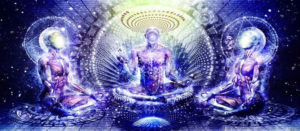
Magic mushrooms are psychotropic drugs and act on the central nervous system to produce their effects. They do not cause hallucinations but may distort the perception of other objects, existing colors or patterns, while also intensifying feelings and emotions. It produces the feeling of one experiencing and communing with a higher power, and make one feel as if time may have sped up, slowed down or completely stopped.
The chemicals or hallucinogens are a diverse group, and can be sectioned based on chemical structures into three major classes:
- Cannabinoids
- Phenethylamines (Mescaline and Methylenedioxymethemphetamin)
- Indolealkylamines or Tryptamines (LSD, Psilocybin, and Psilocin)
In magic mushrooms, Psilocybin is the main psychoactive compound (PY, 4-phosphoryloxy-N, N-dimethyltryptamine). When the mushroom is ingested, the active ingredient psilocybin is converted into the pharmacologically active form psilocin. These ingredients are both indole alkylamines and are structurally similar to the neurotransmitter serotonin.
Baeocystin and Norbaeocystin are tryptamine which may also be present in the drug but they are markedly less active than the prior mentioned two. Psilocybin dissolves easily in water, and moderately in ethanol and methanol, but does not readily dissolve in most organic solvents. The IUPAC nomenclature systematically names psilocybin as [3-(2-dimethylaminoethyl)-1H-indol-4-yi] dihydrogen phosphate. It is the dihydrogen phosphate of psilocin.
The molecular formula of Psilocybin is C12H17N2O4P and with a molecular weight of 284.3g/mol. Psilocin is 3-(2-dimethylaminoethyl)-1H-indol-4-ol or 4-hydroxy-NN-dimethyltryptamine (4-OH-DMT). IUPAC gives it a systematic name of 3-(2-dimethylaminoethyl)-1H-indol-4-ol. Psilocin is known to be relatively unstable in solution and readily forms bluish and black degradation products under alkaline conditions and in the presence of oxygen. Psilocin is an isomer of bufotenine differing from bufotenine in the position of the hydroxyl group. Psilocin has a molecular formula of C12H16N2O and a molecular weight of 204.3g/mol.
Identifying a Magic Mushroom
Generally, magic mushrooms are available in fresh form, treated/preserved forms, and can be obtained even as dry powders or capsules. There are over 50 species of magic mushrooms, and they mainly belong to the genera of Psilocybe, Panaeolus, and Copelandia. Physically, they are brown or tan, and in the wild, they may easily be mistaken for any number of non-psychoactive, inedible, and even poisonous mushrooms. Due to their similarity with the other non-psychoactive and poisonous mushrooms, they are quite difficult to identify and can be hazardous if an untrained person attempts to undertake this task without supervision.
Furthermore, the difficulty in identifying magic mushrooms simply from the morphology can result in their unintentional ingestion. Although a method of identifying the magic mushroom using a genetic approach has been developed, the magic mushroom can be differentiated from its kin, which is common in stores, the Agaricus bisporus, because the flesh of a magic mushroom which contains the active ingredient psilocybin characteristically turns blue or green when it is bruised or cut.
The species of magic mushroom which are within the genus Psilocybe are small with an average size of 3-inch (7.6-centimeter) stalk and 1-inch (2.5-centimeter cap). When fresh, they usually have a light grayish, yellowish, or brownish stem with brown-to-white caps and dark gills.
For example, Psilocybe cubensis is a large mushroom when compared to the others, and it is also the most common. It may be called Mexican mushroom, golden cap, or psilocybe, and it has many different types. Its sticky flesh often turns bluish when bruised or crushed, it has a reddish-brown cap with a white stem which may also be yellowish. It also grows in moist or humid climes and grows on the dung of grazing animals such as cattle and the likes.
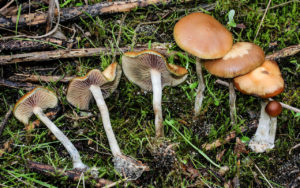
Psilocybe semilanceata, also known as the liberty cap, is a common psilocybin mushroom. Generally, it is found in damp and grassy fields which are usually grazed on by sheep and cattle, but it does not grow in dung. Morphologically, it is a small mushroom that may be light yellow or brown with a very pointed cap. Although Psilocybe pelliculosa is often mistaken for it, its psychoactive properties are weaker.
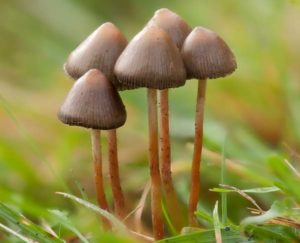
Another common magic mushroom is the Psilocybe baeocystis which has a dark brown cap with a brownish or yellowish stem when fresh, it grows on rotting logs, peat or mulch, as well as in the fields.
The Fly Agaric (Amanita muscaria) is a different species of magic mushroom which produces a state of delirium that also includes hallucinations, but its active ingredients are muscimol and ibotenic acid, not psilocybin.
The Effects of Magic Mushrooms
The dosage and effectiveness of a magic mushroom depend on the specie. Where it was grown and how it has been handled. Some mushrooms such as the Psilocybe cubensis are considered to be stronger than the magic mushrooms found in the Gulf Coast.
Also, the psilocybin content, which is the psychoactive material deteriorates when the mushrooms are dried which will require more to be consumed for the same effect. The behavioral effects produced by magic mushrooms depends largely on the individual’s reaction and sensitivity to psilocybin, the general situation, and the individual’s previous experiences with the drug.
In general, people who are new to taking magic mushrooms are advised to ingest 1 gram or even less at the first intake, wait for about an hour or more, and then evaluate how they feel before opting to ingest more of the drug. The major effects of the drug are related to the central nervous system, and the effects produced may range from mild sensations and feeling of relaxation to euphoria, some experiences are as intense as having visual enhancement, delusions, altered perception of real events or even real hallucination. Some people’s experiences may be skewed towards the negative such as being generally restless, incoordination, feelings of anxiety, and even depersonalization.
Physiologically, individuals may feel dizzy, nauseous, shivers, the elevation of blood pressure, and the like. Some may also experience abdominal pain, dilation of the pupils, increased heart rates, and breathing.
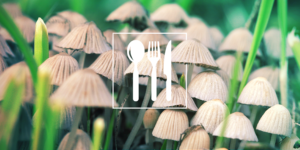
You can ingest doses of magic mushroom ranging from 2-5grams depending on the species and the strength of the compounds in them. The materials may be boiled in water and used to cook, or make tea or it may be ingested raw. Others may opt for making smoothies, brewing it into a tea by grinding them, steeping them in hot water, and straining the resulting liquid, because cooking mushrooms for long will likely breakdown the psilocybin and result in weaker psychotropic effects.
After ingestion, enzymes within the body act on the psilocybin and convert it to psilocin, and it is absorbed from the gastrointestinal tracts by the body, and its effect is usually felt within 30minutes and can last for about 4-6hours.
In our stores, we sell online the best grade and highly researched magic mushroom products, ranging from fresh mushrooms to spore prints to spawn bags and grow kits. We at Zoomies anticipate your patronage.

